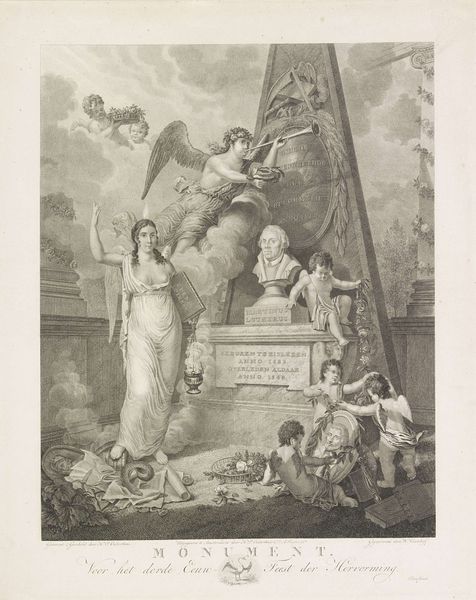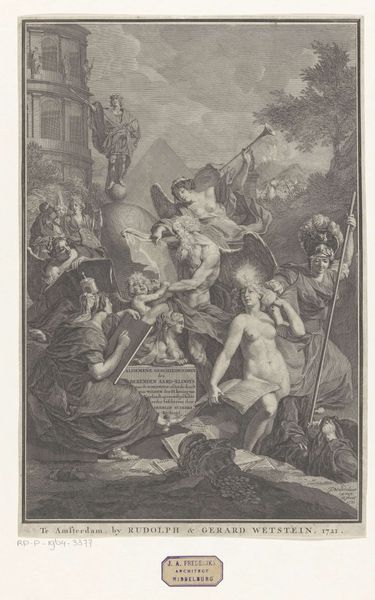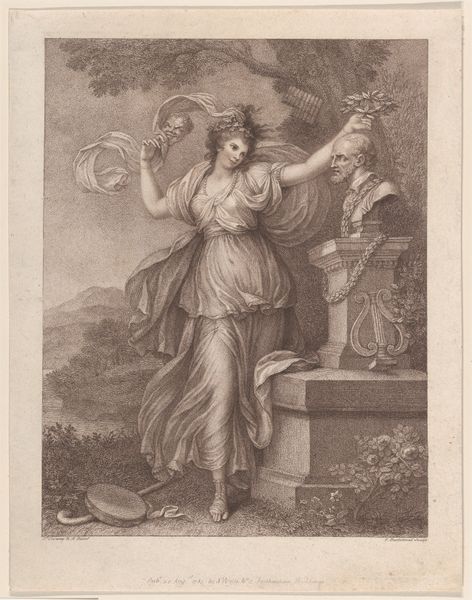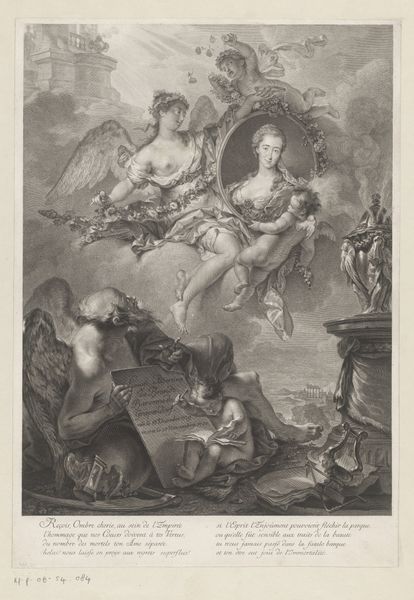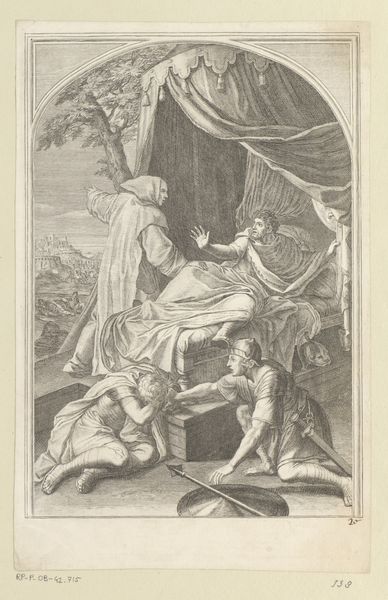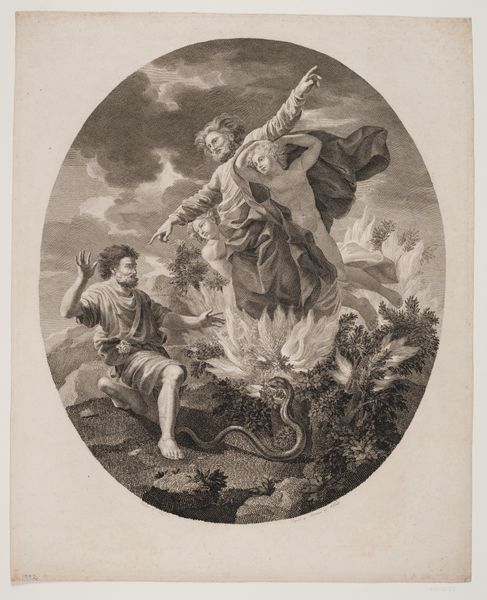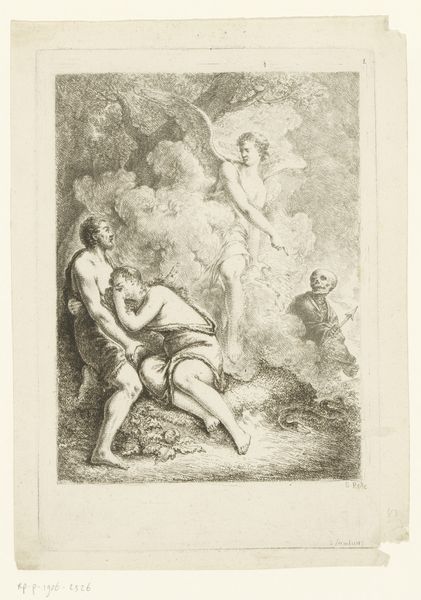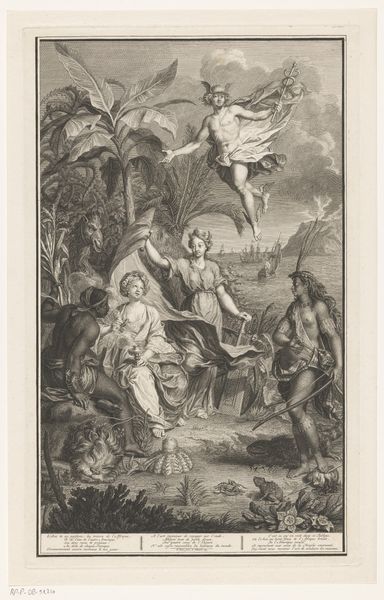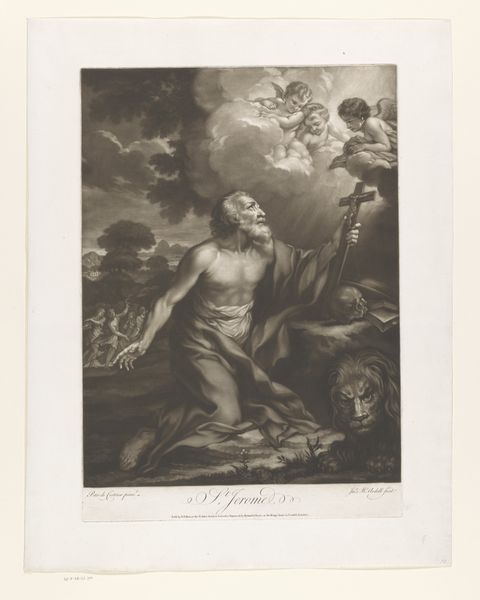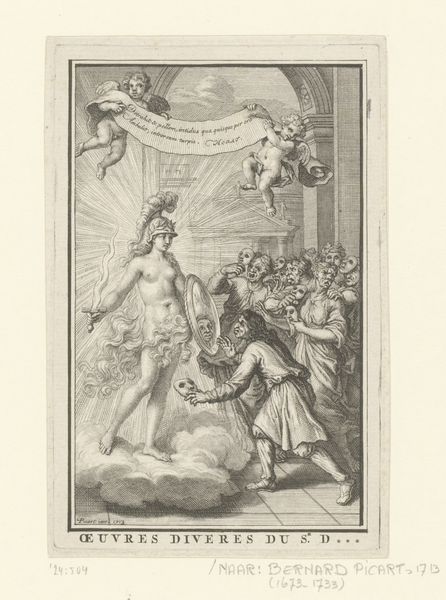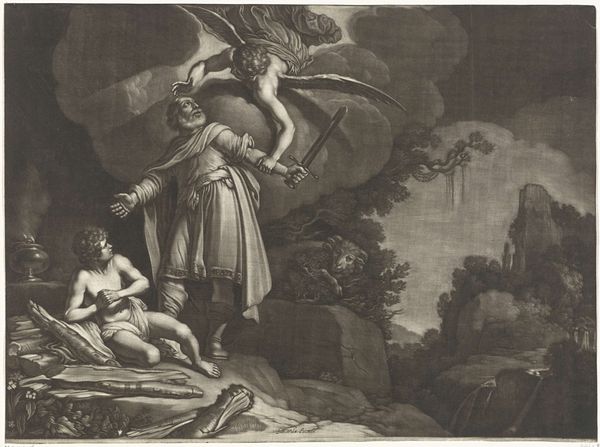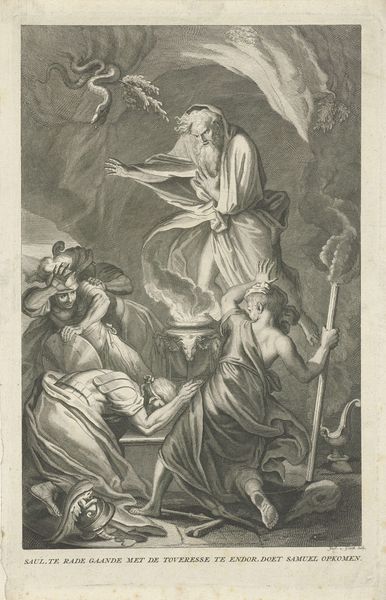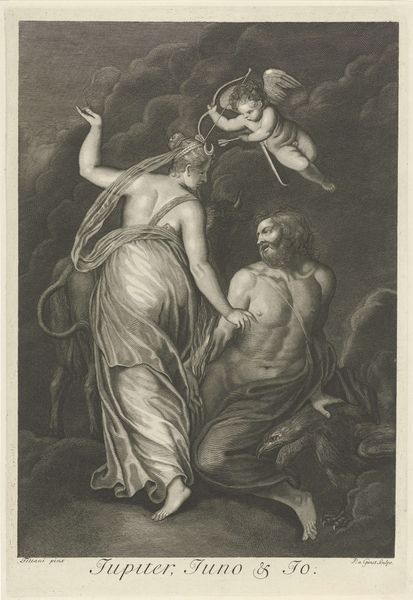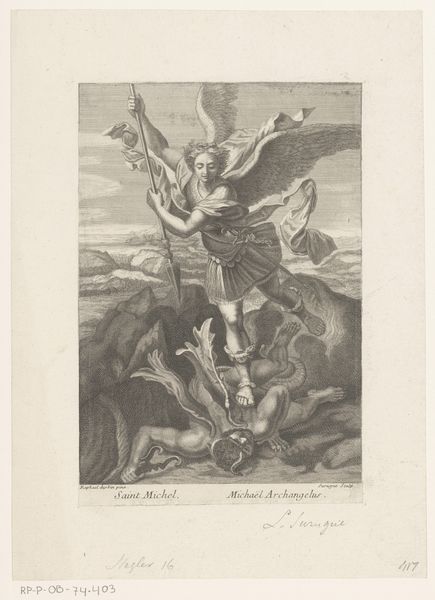
engraving
#
neoclacissism
#
allegory
#
old engraving style
#
19th century
#
history-painting
#
engraving
Dimensions: height 592 mm, width 464 mm
Copyright: Rijks Museum: Open Domain
Editor: Here we have “Buste van Willem V, prins van Oranje-Nassau,” an engraving from around 1787 to 1851, here on display at the Rijksmuseum. The allegorical scene feels intensely symbolic. I'm especially drawn to the dejected lion. How do you interpret this work? Curator: The engraving speaks volumes about the political turbulence of the Dutch Republic in the late 18th century. Note the neoclassical style, referencing ideals of order amidst chaos. The female figure recoiling from the bust represents the Dutch Republic at a crossroads. Why do you think the artist included a fallen lion? Editor: Well, a lion is usually associated with bravery and strength… perhaps its fall symbolizes the weakening of the Dutch Republic? Curator: Exactly. The lion, symbol of Dutch power, lies defeated, a poignant commentary on the political landscape after the Fourth Anglo-Dutch War and brewing internal conflicts. Consider how the engraving positions Willem V, Prince of Orange-Nassau, as central even in absentia. What power dynamics do you think are being emphasized? Editor: The presence of cherubic figures attending to his bust, as well as the hovering angelic figure, suggests an effort to legitimize his authority even amidst upheaval, right? And the engraving format itself makes me think about the broader distribution of this message. Curator: Precisely! Engravings allowed for wide dissemination of political imagery. This work becomes a form of propaganda, subtly advocating for the Prince during a time of deep division. The use of allegory allows the artist to both critique and cautiously endorse certain positions, wouldn’t you say? Editor: Absolutely. I didn't realize how much socio-political commentary could be packed into a single image! This helps me to appreciate it so much more. Curator: It’s in understanding those contexts that we can have a richer understanding of the artist's narrative of identity, race and power.
Comments
No comments
Be the first to comment and join the conversation on the ultimate creative platform.
